
Perennial Forbs Around Las Vegas, Vegetation Around Las Vegas
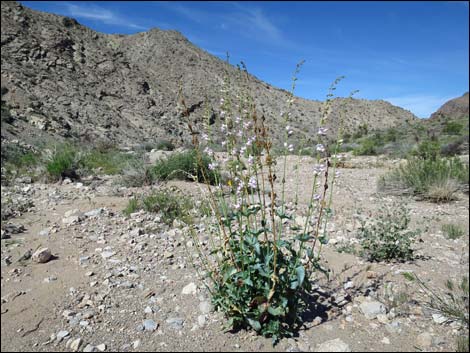 Tall plant with basal leaves and ascending stems |
General: Palmer's Penstemon (Penstemon palmeri var. palmeri) is a perennial forb with several tall, stiff, upright stems that all arise from the ground. Leaves opposite, upper leaf pairs fused around stem. Flowers large, tubular, and bulbous. Unique to Penstemons in our area, the flowers of Palmer's Penstemon are fragrant. Inflorescence glandular or glandular-hairy. Flowers pink to rosy, inflated or bulbous (24–34 mm wide), asymmetrical, and a yellow-hairy tongue (staminode) sticks out of each flower (another name for the family is Beardtongue). Anther sacs large (1.3–2.4 mm). Strong bee guides on lower "petals." Palmer's Penstemon is a fairly common component of desert vegetation communities on dry, well-drained sandy and gravelly sites on desert flats, in and along washes, and on bajadas in the Upper Sonoran (Mojave Desert Scrub) life zone. This species is fairly common on roadsides and in burn areas. |
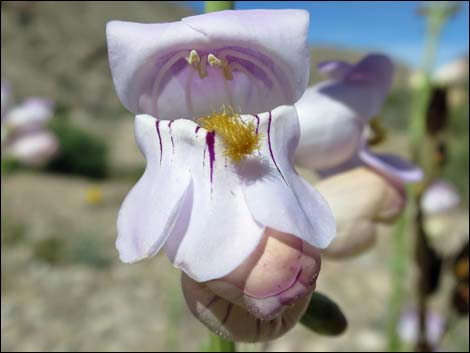 Flowers purplish, bulbous, asymmetrical, and a yellow-hairy tongue |
Family: Figwort (Scrophulariaceae). Recent genetic research suggests that Penstemon should be included in the Plantaginaceae. Other Names: Plant Form: Several tall, upright stems all arising from the ground. Height: Flowering stalk to about 6 feet. Stems: Round. Leaves: Opposite, oblong, thick, and gray-green; leaves on the stem to 5 inches long, triangular, clasping (ascend the stalk in fused pairs). |
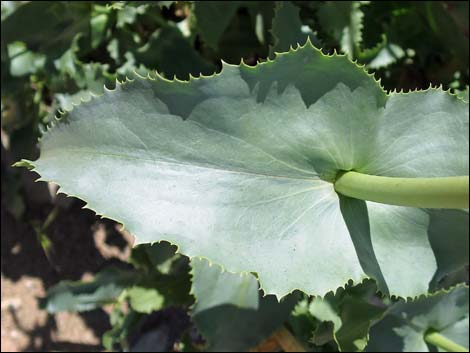 Opposite leaves fused (clasping) |
Flowers: Blooms late spring and early summer. Flowering stalks to 5-ft fall; flower tend to form in a cluster with flowers turned to one side (or opposite sides) forming a long, narrow cluster. Flowers complex and bilaterally symmetrical with 5 lobes (upper lip with 2-lobes, lower lip with 3), petals usually light pink with purple streaks (white to reddish-pink). Seeds: Fruit: oblong capsule. Seeds: small, black. Habitat: Dry, well-drained sandy, gravelly, and rocky soils on flats, in and along washes, on bajadas, and on moderate slopes in the lower mountains. Elevation: About 3,500 to 7,500 feet. Distribution: Southern California to southern Utah and Arizona. Comments: if you sniff a Palmer's Penstemon flower, you should be able to smell fragrance. In our area, fragrance is unique to Palmer's Penstemon -- it's a definitive test. |
 |
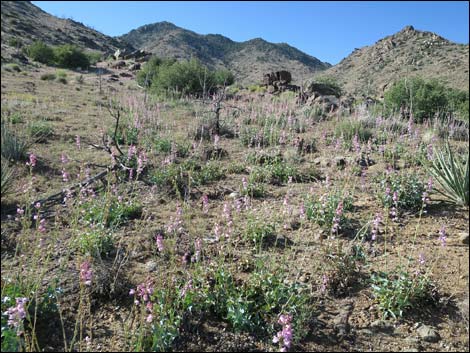 |
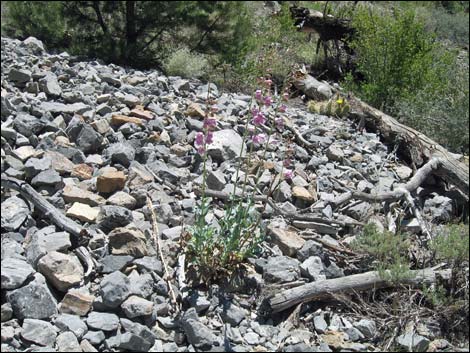 Penstemon on rocky hillside |
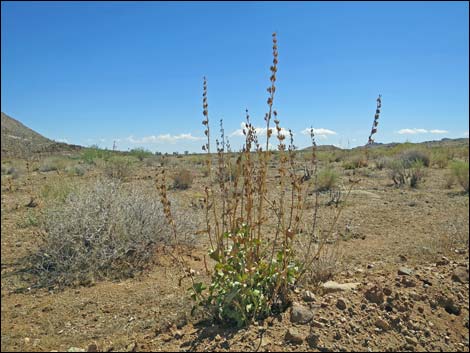 Penstemon during the heat of summer (July 115 degrees) |
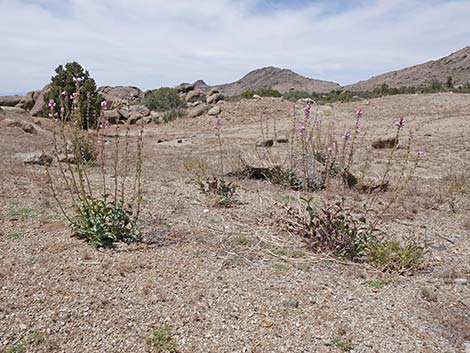 Palmer's Penstemon reclaiming disturbed land |
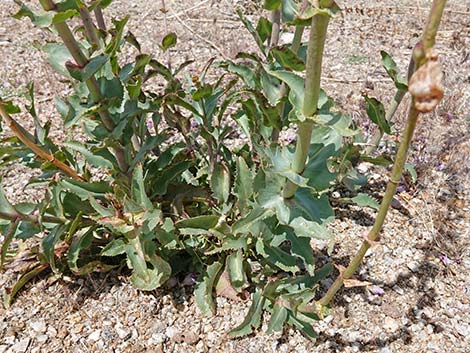 Basal leaves on an older plant |
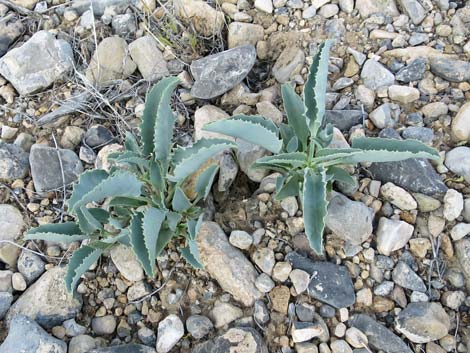 Sprouts |
 Leaves: Opposite, thick; to 5 inches long, triangular, clasping |
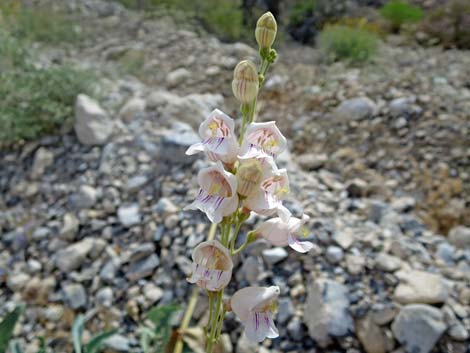 Flowering stalk |
 Flowers and flower buds |
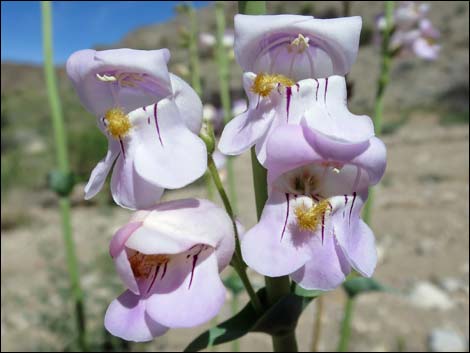 |
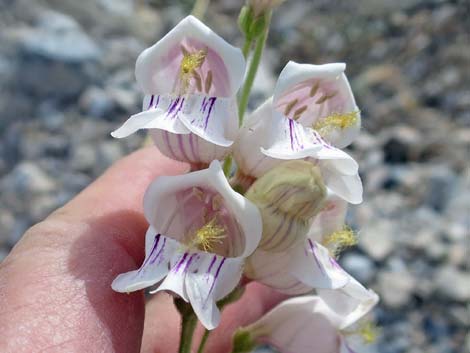 |
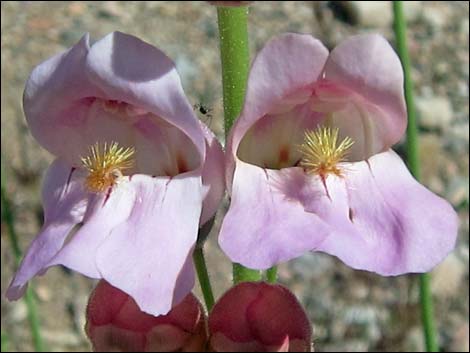 |
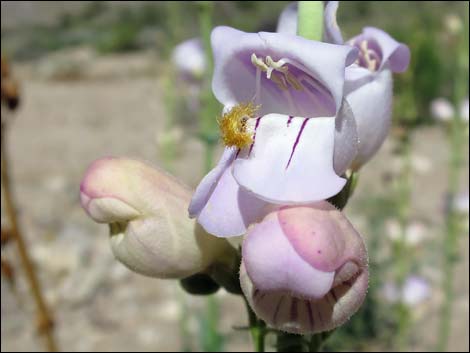 |
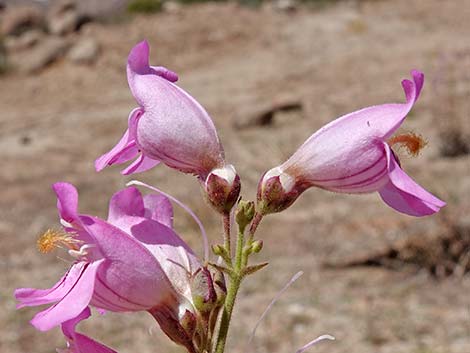 |
 |
 Staminode exserted, densely yellow-hairy |
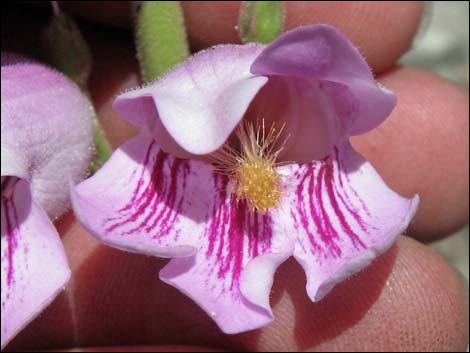 Staminode exserted, densely yellow-hairy |
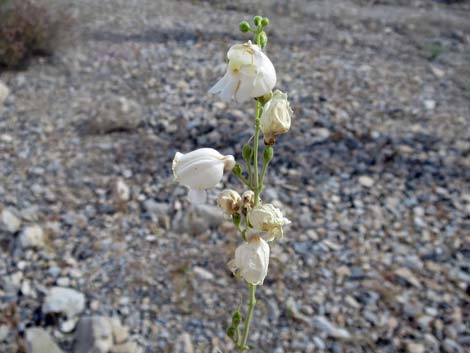 Unusual all-white specimen |
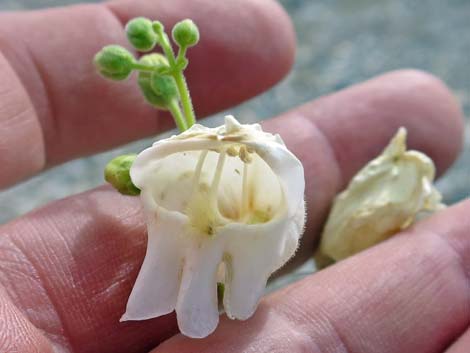 Unusual all-white specimen |
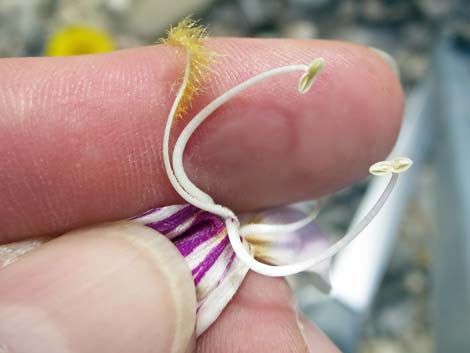 Staminode (yellow hairy), filaments, and open anther sacks |
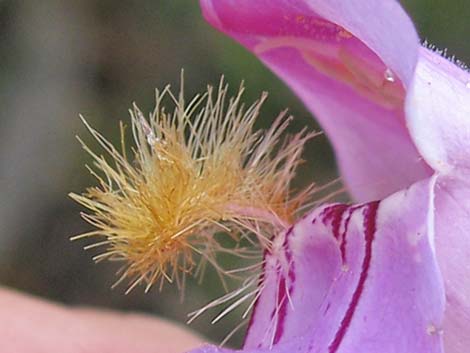 Staminode (yellow hairy) |
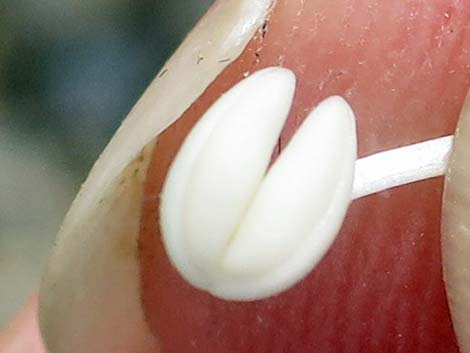 Anther sack before opening |
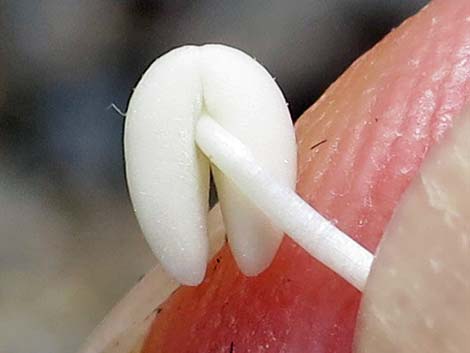 Anther sack before opening |
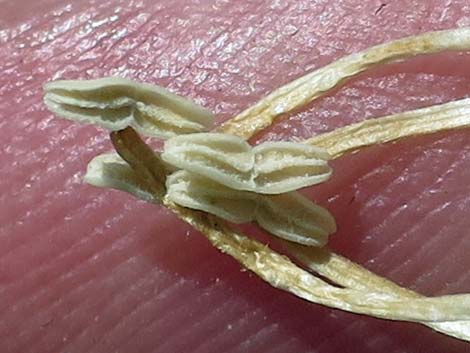 Anther sacks open from the middle and fold out |
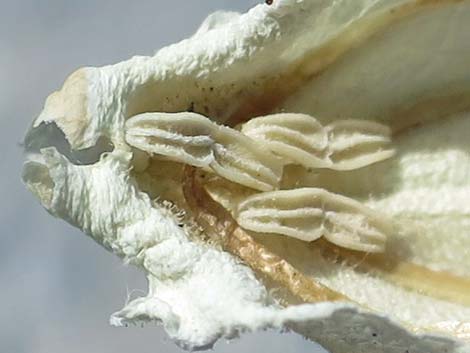 Anther sacks open from the middle and fold out |
 Palmer's Penstemon during winter in southern Gold Butte |
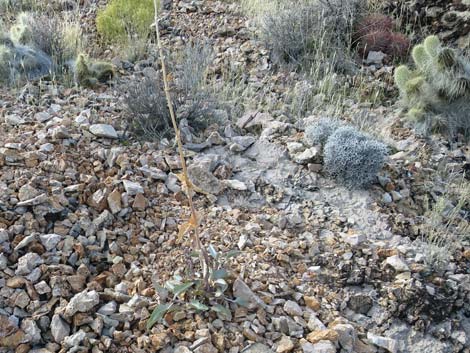 Palmer's Penstemon during winter in southern Gold Butte |
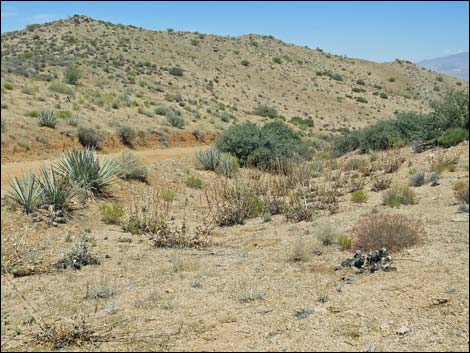 Penstemon during the heat of summer (July 115 degrees) |
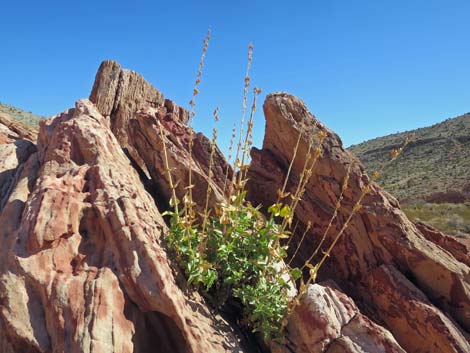 Palmer's Penstemon during early spring in Red Rock Canyon NCA |
Note: All distances, elevations, and other facts are approximate. Names generally follow the USDA database.
![]() ; Last updated 250605
; Last updated 250605
| All Perennial Forbs | Plant Species Index | Glossary | Copyright, Conditions, Disclaimer | Home |